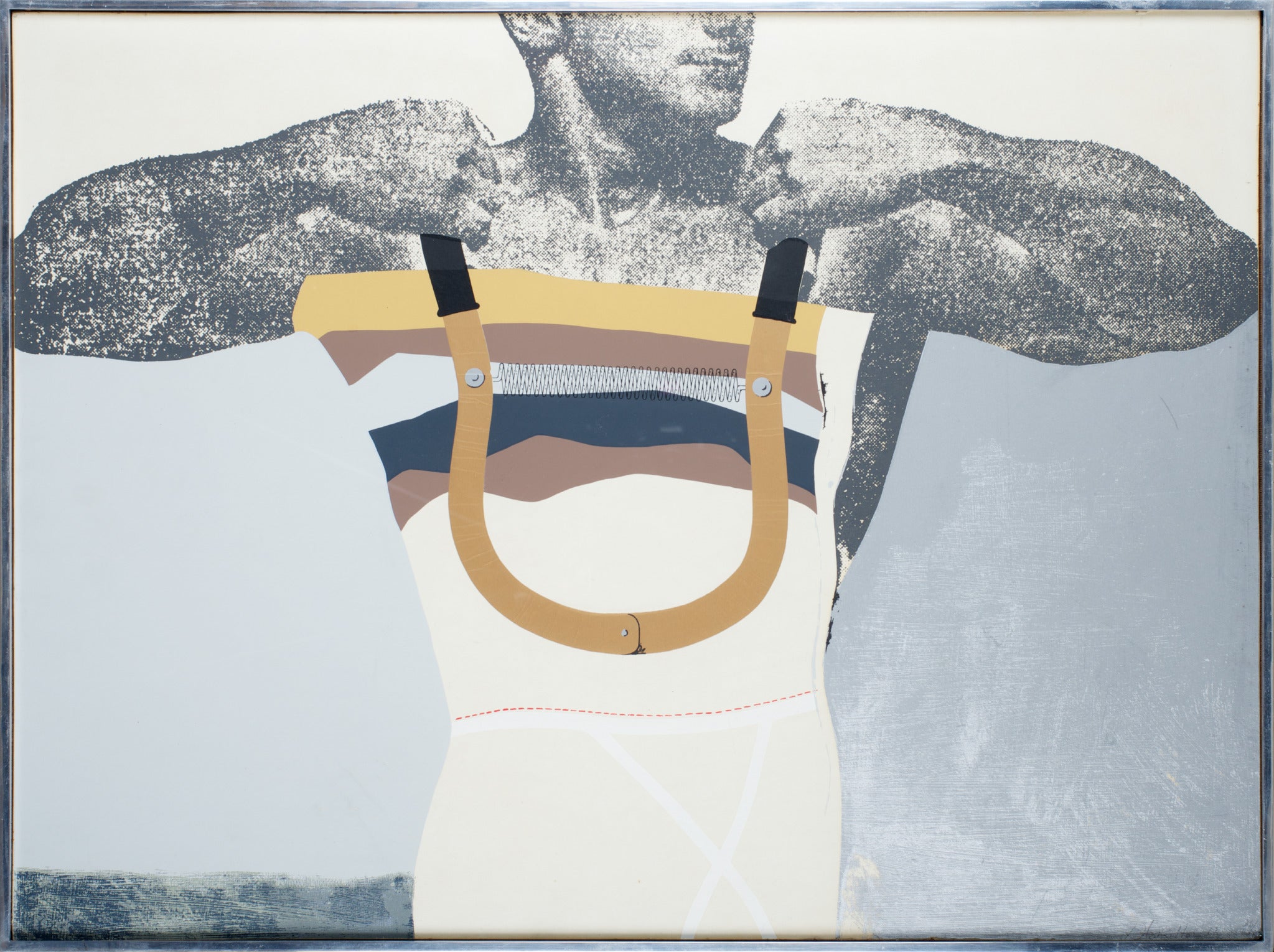Richard Hamilton: Respective review, Pallant House: A restless showcase of the early pop artist
This new exhibition makes clear how the visceral newness of modernism titans such as Duchamp influenced the father of British pop art

Pop art, as Richard Hamilton fashioned it, was once the “now” to modernism’s “then” – but walk through Pallant House Gallery’s exhibition Respective, and it is clear how the visceral newness of modernism titans such as Duchamp influenced pop art’s Hamilton.
Hamilton arranged Duchamp’s first British retrospective at the Tate in 1966. Holding the artist in high regard, Hamilton was drawn to Duchamp’s decided disregard for the orders of high and low art, and for his twists and play with words. One could argue that Hamilton admired Duchamp’s heterogeneity, and sought to push this further with his exploration of drawing, painting, photograph, sound, installation and digital print. Hamilton’s early abstract works rarely rouse visual prompts, as his more bombastic images dominate our visual lexicon. To this end, “Respective”, an intricate oil painting that gives the exhibition its title, offers insight into Hamilton’s interest in visual perception and the fundamentals of perspective.
Hamilton writes, “My paintings at this time were abstract [and] demonstrate one clear preoccupation – the use of minimal elements to articulate the picture surface.” It is back-to-basics bare canvas and simple marks, urging us – and him – to consider our relationships between these marks and as a whole. This idea is developed later in “Hers Is A Lush Situation” (1958), when Hamilton had begun his investigations into his own self-styling of pop art. Here, he posits the relationship between woman and machine, as detailed in three interwoven elements: the girl in the car with a Sophia Loren pout; the car vrooming in motion; and the hyper-detailed urban landscape of New York.
Of particular enjoyment is the iconic “Swingeing London”. Hamilton thought that pop art should be popular, sexy, big business. He was fascinated by the modern world. Mick Jagger handcuffed after a party at Keith Richards’ Sussex home encapsulates an era of fascination with celebrity scandal that spawned a series of paintings and screenprints. Fuzzy, hazy, periwinkle-green-jacketed Jagger is repeated in etching, screenprint and lithograph. Newspaper cuttings mark the inception of Hamilton’s collage work and in this instance, “Swingeing London” is laid out like a page of newsprint, with a banner headline: “STONES: ‘A STRONG SWEET SMELL OF INCENSE’”, a reference to the incense that the police noted when they raided the house.
It is difficult to contest the triumph of “Oculist Witnesses”, a 1968 collaborative effort between Duchamp and Hamilton. It reminds me of “The Large Glass”, part of the Tate collection, which is one such excellent example of Hamilton’s preoccupation with Duchamp. Drawing further links with the polemic work, in this exhibition, through the publication “The Bride Stripped Bare by Her Bachelors Even Again” (1966), we discover the process of Hamilton creating a reconstruction of Marcel Duchamp’s “Large Glass”.
The exhibition is restless at times – Hamilton does many things, luckily most of them well. There are enough of the favourites, as well as works to consider Hamilton anew.



Join our commenting forum
Join thought-provoking conversations, follow other Independent readers and see their replies
Comments